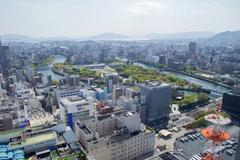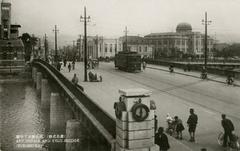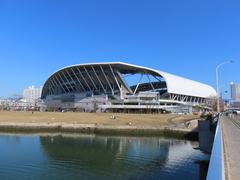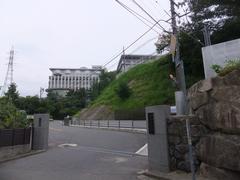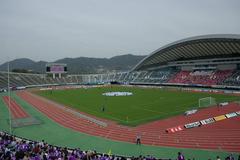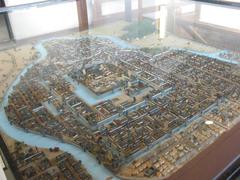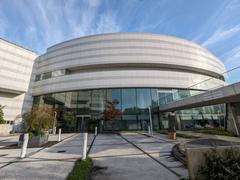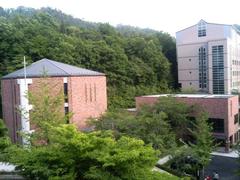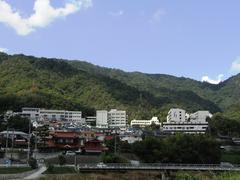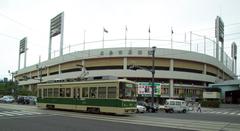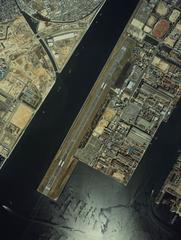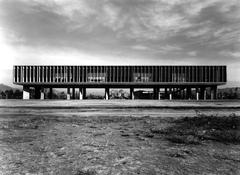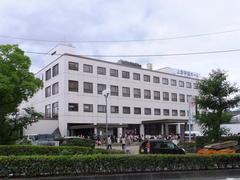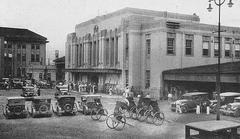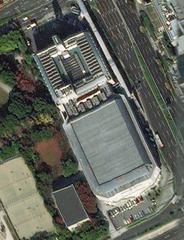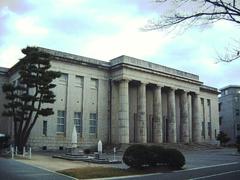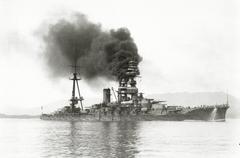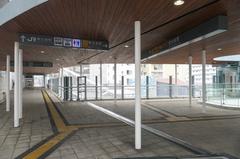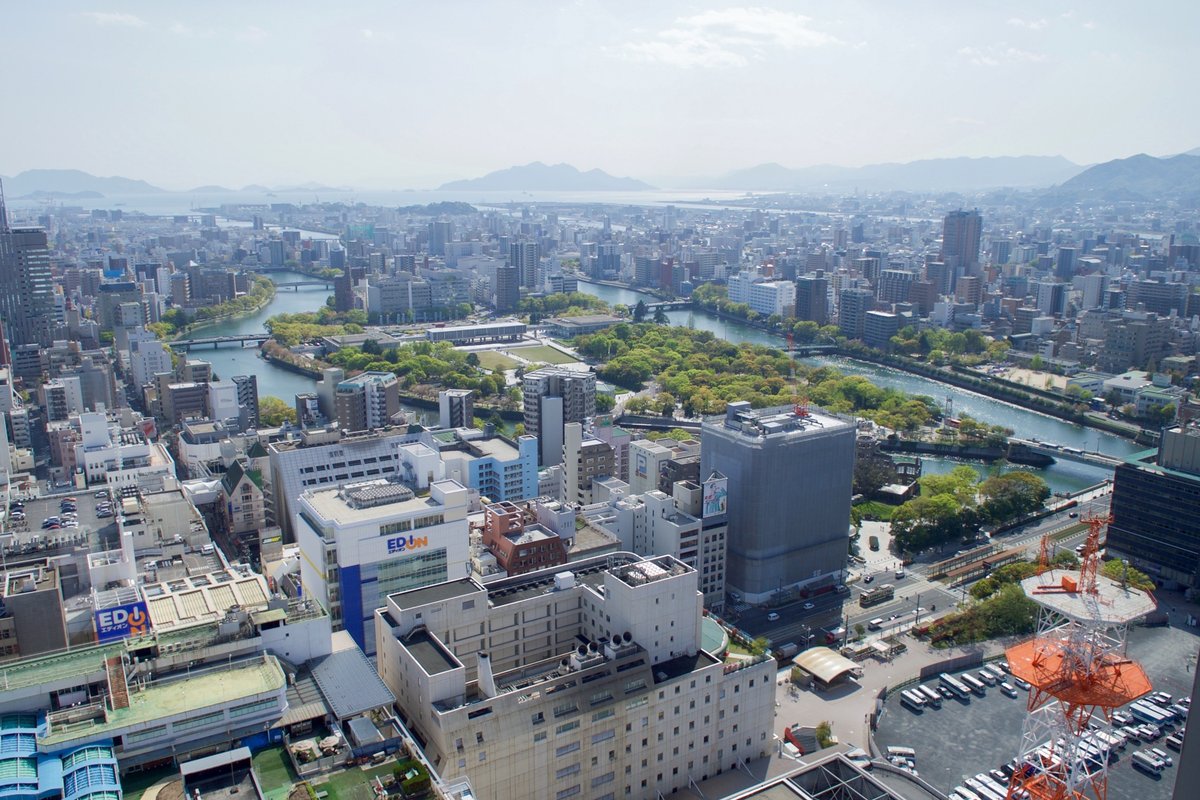
Hiroshima Peace Memorial Park Visiting Hours, Tickets, and Guide to Historical Sites
Date: 14/06/2025
Introduction
Hiroshima Peace Memorial Park is an enduring symbol of peace and resilience, dedicated to commemorating the victims of the atomic bombing on August 6, 1945. Situated at the heart of Hiroshima City, this expansive park not only honors the memory of those lost but also serves as an educational space advocating for the abolition of nuclear weapons and the promotion of lasting peace. With its iconic centerpiece, the Atomic Bomb Dome—a UNESCO World Heritage Site—and a collection of powerful monuments, museums, and annual ceremonies, the park draws millions of visitors from around the world each year.
This comprehensive guide details everything you need to know about visiting Hiroshima Peace Memorial Park, including historical context, key attractions, visiting hours, ticket information, accessibility, travel tips, and nearby historical sites. For official updates and further planning resources, consult platforms such as Japan Guide, JR Pass, and JapanActivity.
Historical and Cultural Significance
Hiroshima Peace Memorial Park occupies the area that was once Hiroshima’s bustling political and commercial center, completely destroyed in the bombing. The park was established as a space for mourning, reflection, and a beacon for peace. Central to this vision is the Atomic Bomb Dome, the preserved skeleton of the former Industrial Promotion Hall, which stands as a haunting reminder of the devastation and a powerful call for nuclear disarmament (Japan Guide).
The park’s creation and its ongoing legacy are deeply entwined with Hiroshima’s postwar identity as a city of peace. Annual ceremonies, monuments dedicated to specific groups (such as children, teachers, and Korean victims), and survivor testimonies all contribute to the park’s role as a global symbol of remembrance and hope (History Tools).
Key Attractions and Monuments
Atomic Bomb Dome (Genbaku Dome)
The Atomic Bomb Dome is the park’s most iconic structure and a UNESCO World Heritage Site. Originally the Hiroshima Prefectural Industrial Promotion Hall, it survived the atomic blast as a skeletal ruin. The Dome remains untouched as a stark visual symbol of both the destruction caused by nuclear weapons and the resilience of Hiroshima’s people. This outdoor monument is freely accessible at all times, with no admission fee (Japan Guide).
Hiroshima Peace Memorial Museum
The museum offers a detailed and emotional account of the bombing and its aftermath through artifacts, photographs, survivor testimonies, and historical displays. It is divided into two main sections:
- East Building: Provides context on Hiroshima before and after the bombing, and the sequence of events leading to the attack.
- Main Building: Focuses on the human cost, with personal items and powerful stories from victims and survivors.
Hours: 8:30 am – 6:00 pm (March–November), 8:30 am – 5:00 pm (December–February). Last entry is 30 minutes before closing.
Admission: Adults 200 yen, students 100 yen, children free (Hiroshima Peace Memorial Museum).
Accessibility: Fully wheelchair accessible, with multilingual audio guides available.
Cenotaph for the Atomic Bomb Victims
This stone monument shelters a chest containing the names of over 140,000 victims. The arch design protects the souls of the deceased and aligns visually with the Peace Flame and Atomic Bomb Dome, creating a symbolic axis through the park (Japan Guide).
Flame of Peace
Lit in 1964, this eternal flame symbolizes Hiroshima’s commitment to a nuclear-free world and will remain alight until all nuclear weapons are eliminated (JR Pass).
Children’s Peace Monument
Inspired by Sadako Sasaki, a child victim who folded paper cranes in hope of recovery, this monument honors the thousands of children lost in the bombing. Surrounding glass cases display thousands of origami cranes sent by children from around the world (JR Pass).
Hiroshima National Peace Memorial Hall for the Atomic Bomb Victims
A solemn hall for reflection, featuring a panoramic mural of post-bomb Hiroshima and a central water basin. The hall includes a database of victims’ names and survivor testimonies. Admission is free (Flashpacking Japan).
Peace Bell
Visitors are welcome to ring this large bronze bell, which is inscribed with a map of a borderless world as a gesture for peace (Japan Travel Note).
Rest House of Hiroshima Peace Park
One of the few buildings to survive the bombing, now functioning as a visitor center and housing the preserved basement where a survivor sheltered (JR Pass).
Aioi Bridge
This T-shaped bridge was the intended aiming point of the atomic bomb and offers striking views of the Dome and park (Flashpacking Japan).
Peace Clock Tower
Chimes daily at 8:15 am, the moment the bomb detonated, serving as a continual call for peace (Flashpacking Japan).
Other Notable Monuments
The park contains over 60 monuments, including:
- Monument to Korean Victims and Survivors
- Monument of the A-bombed Teachers and Students
- Gates of Peace
- Peace Fountain
Park Layout and Navigation
The park is divided into north (Atomic Bomb Dome), central (museum, cenotaph, Peace Flame), and south (Peace Memorial Hall) zones. Clearly marked walking paths, signage in multiple languages, and riverside views create a tranquil environment suitable for reflection (Japan Travel Note).
Visiting Hours and Ticket Information
- Park Grounds: Open 24/7, year-round, free entry.
- Peace Memorial Museum: 8:30 am–6:00 pm (March–November), 8:30 am–5:00 pm (December–February). Last admission 30 minutes before closing.
- Rest House: Open during regular daytime hours.
- Tickets: Park access is free; museum entry is 200 yen for adults, 100 yen for students, and free for children. Discounts apply for groups.
- Online Reservations: Recommended during peak seasons (official museum website).
Accessibility and Facilities
- Wheelchair Access: The park, museum, and major facilities are barrier-free with ramps, elevators, and accessible restrooms.
- Audio Guides: Available in 15 languages, with Japanese narration by Sayuri Yoshinaga (Japan Travel Note).
- Information Desks: Multilingual support, leaflets in 12 languages.
- Lockers and Vending Machines: On-site for visitor convenience.
Travel Tips
- Best Visit Times: Early morning or late afternoon for a quieter experience; avoid weekends and national holidays for fewer crowds (The Broke Backpacker).
- Seasonal Highlights: Cherry blossoms in early April and autumn foliage are particularly scenic (Promos Japan).
- Etiquette: Maintain a respectful demeanor; photography outdoors is permitted, but restrictions apply inside the museum.
- Family Visits: Suitable for children, though parental guidance is suggested due to sensitive exhibits.
- Passes: Hiroshima Omotenashi Pass and Visit Hiroshima Tourist Pass provide discounts and unlimited city transport (WAmazing).
Annual Events
Hiroshima Peace Memorial Ceremony (August 6)
A solemn annual event marking the bombing anniversary. Includes speeches, a minute’s silence at 8:15 am, dove releases, and the reading of the Peace Declaration (JapanActivity; Mainichi Japan).
Lantern Floating Ceremony (August 6, Evening)
Thousands of paper lanterns inscribed with messages are released on the Motoyasu River—a moving tribute to the victims (GetHiroshima).
Hiroshima Flower Festival (Early May)
A joyful celebration of life and renewal, featuring parades, music, and floral displays (JapanActivity).
Guided Tours and Special Programs
- Guided Tours: Offered by local experts and survivors (hibakusha), available in multiple languages.
- Audio Guides: Rentable at the museum for self-guided exploration.
- Educational Workshops: Held year-round, often aligned with international peace initiatives.
Nearby Historical Sites
- Hiroshima Castle: Reconstructed samurai castle and museum, a 15-minute walk from the park (The Broke Backpacker).
- Shukkeien Garden: Traditional Japanese landscape garden, ideal for peaceful strolls (Travel Stay Guide).
- Orizuru Tower: Offers panoramic views and origami crane activities (WAmazing).
- Hiroshima Museum of Art: Features European and Japanese works.
- Miyajima Island: Famous for Itsukushima Shrine and floating torii gate, accessible by tram and ferry.
Dining and Accommodation
- Dining: Numerous cafes and restaurants nearby serve local specialties such as okonomiyaki and oysters.
- Accommodation: Motomachi and Kakomachi districts offer a range of hotels and guesthouses within walking distance (The Broke Backpacker).
Practical Information
- Luggage Storage: Coin lockers available at Hiroshima Station and in the park area.
- Safety: Hiroshima is a safe, tourist-friendly city with clear English signage.
- Weather: Spring and autumn are ideal; summers can be hot and humid.
Frequently Asked Questions (FAQ)
Q: What are the visiting hours for Hiroshima Peace Memorial Park and the museum?
A: The park is open 24 hours; the museum is open 8:30 am–6:00 pm (March–November), 8:30 am–5:00 pm (December–February), with last entry 30 minutes before closing.
Q: How much are museum tickets?
A: Adults 200 yen; high school students 100 yen; children free.
Q: Is it necessary to reserve tickets?
A: Recommended during peak hours and seasons. Book via the official museum website.
Q: Is the park accessible for wheelchair users?
A: Yes, with ramps, elevators, and accessible restrooms throughout.
Q: Are guided tours available?
A: Yes, both guided and self-guided options exist in multiple languages.
Q: Can children visit the park and museum?
A: Yes, though parental supervision is advised due to sensitive content.
Visitor Recommendations
A visit to Hiroshima Peace Memorial Park is a deeply moving and educational experience. To make the most of your visit:
- Arrive early or late in the day for a quieter atmosphere.
- Allow 2–4 hours to fully explore the park, museum, and monuments.
- Consider joining a guided tour for enhanced understanding.
- Respect the solemnity of the site, especially during ceremonies or near memorials.
- Explore nearby attractions to deepen your appreciation of Hiroshima’s history and culture.
For up-to-date information, audio guides, event details, and exclusive travel tips, download the Audiala app and consult official resources such as the Hiroshima Peace Memorial Museum website.
Sources and Official Links
- Japan Guide
- JR Pass
- JapanActivity
- Japan Travel Note
- Trip.com
- WAmazing
- The Broke Backpacker
- Travel Stay Guide
- Promos Japan
- Flashpacking Japan
- GetHiroshima
- Mainichi Japan
- Hiroshima Peace Memorial Museum
- Wikipedia
